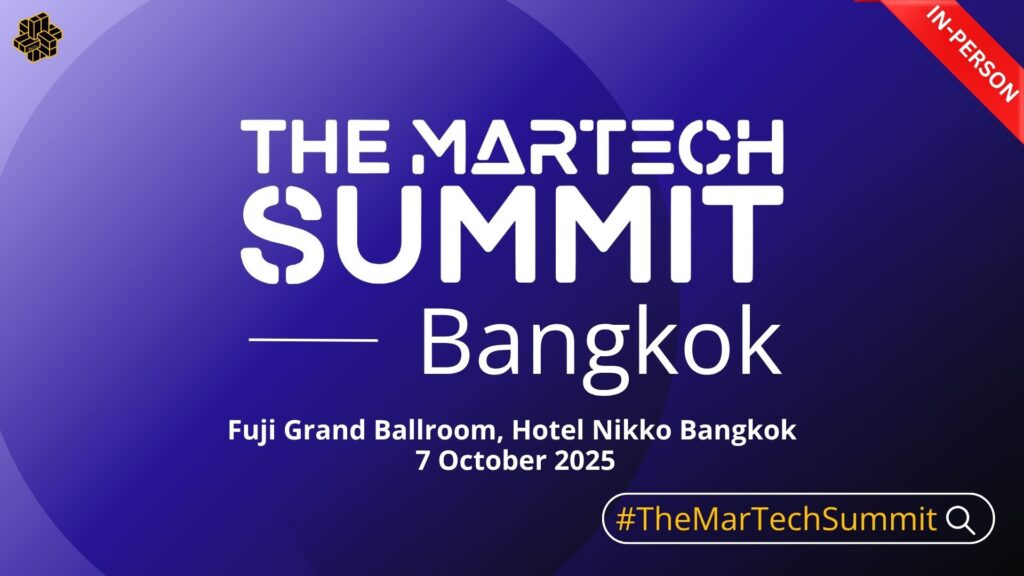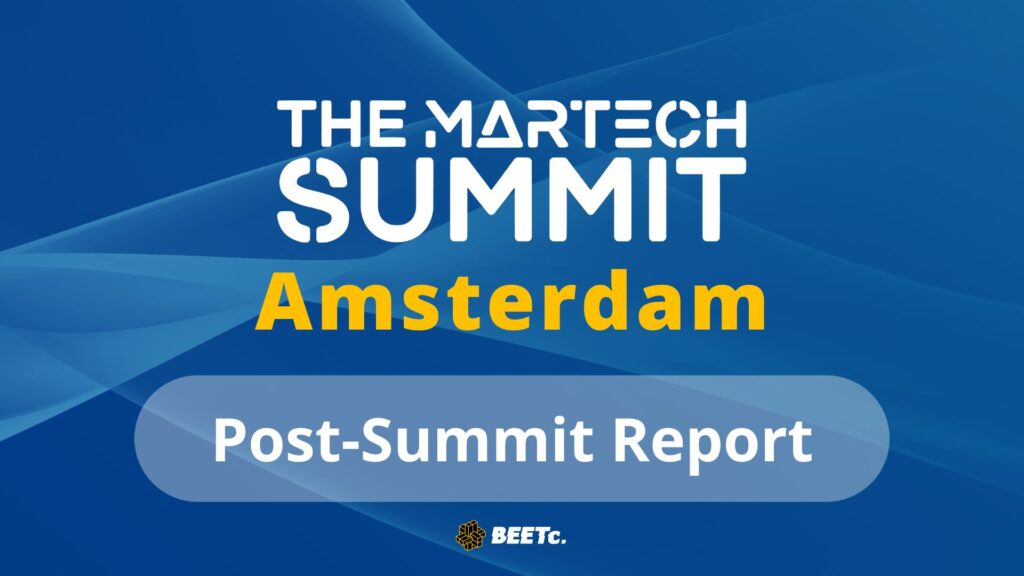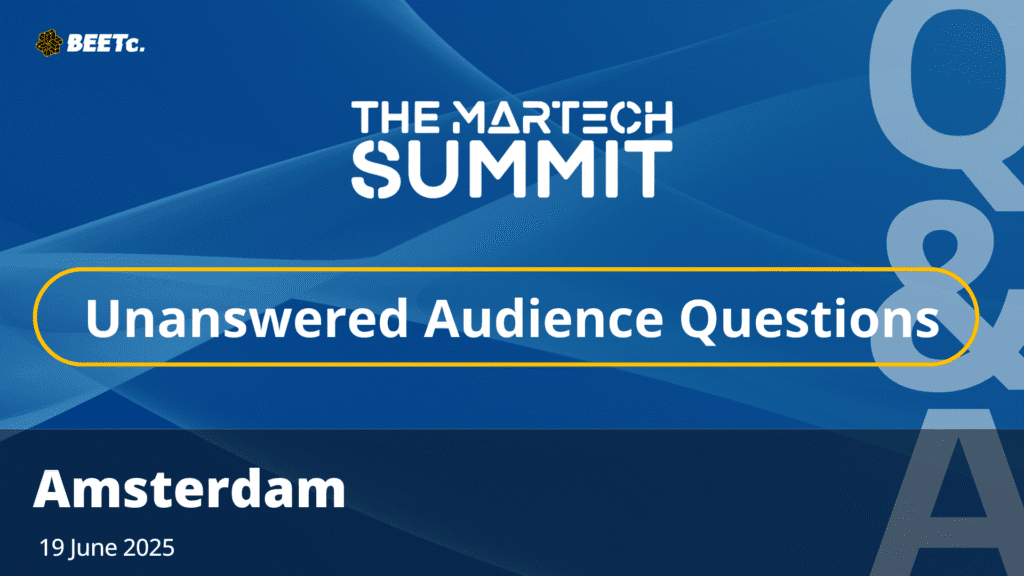What are the key priorities for a MarTech stack optimisation strategy to achieve?
– Drive pipeline growth or acceleration.
What would your company use AI the most for?
– Create scaled hyper-personalised content.
– Develop data-led marketing campaigns.
What are the major roadblocks in trialling the new innovations in marketing technologies?
– Complexity.
How important is data in making marketing decisions and engaging customers?
– Very important – I always leverage data 100% of the time.
What is the one marketing platform / app / solution you can’t live without? Why?
– SFDC – it might not be the most obvious from a marketing perspective, but it’s the heart of everything and all marketing tech connects through it and to it. The absolute essential need for a well maintained managed and structured CRM is pivotal to anything and really helps optimally facilitate that marketing and sales connection.
How do you see the skillsets needed for the marketing profession changing?
– Personally, I see the breadth of skillset as being more important than ever for marketing leaders. Whilst the role of specialisms as part of a marketing team is hyper-important and particularly with continually expanded and complex elements/ technologies – as well as the fact that the customer is more empowered than ever before – having a broad understanding of every element of the marcomms mix is essential. The important thing is being able to take that breadth of expertise and weave it into an integrated, connected marketing strategy that creates – or aspires to create – a seamless marketing experience for the customer. Understanding new and emerging technologies, areas such as AI will also play a key part in the world moving forward and we need to not be scared of it, but embrace the power it provides.
Within a B2B environment, ABM is also becoming more and more essential for every organisation that really expects to connect with any part of the market and even a lower level buying team. With customers so empowered and expecting more and more personalisation and specificity in outreach to distinguish real value in messages, ABM is a key fundamental to how B2B marketers need to think.
With the recent developments and incorporation of technology, should we still perceive marketing as a social science?
– People are more than ever at the heart of everything we do as marketers. It really doesn’t matter whether it’s a B2B, B2C, B2B2C or any other, but – and to steal from the insightful Bryan Kramer, I really do believe that we need to take this perspective more than ever before. If we fail to connect with customers as though they are individuals and people and don’t consider the broader context for them and their overall place in the market, we will absolutely fail to connect on any meaningful basis. A B2B organisation isn’t just a target account. A CEO, CISO, CIO, CFO or whatever isn’t just a target job title. These aren’t just buying and influencing centres but are individuals and highly connected and specific stakeholders with interconnectivity and influence far beyond just engaging with a campaign or programme.
At your organisation what tasks in marketing are good to automate and what tasks still need a human touch?
– There are more tools than ever to help automate, test and optimise outcomes but to get the absolute best results it really does need a human hand to guide and shape decision making. I’ve seen, for example, some great insights from the likes of Jeremy Waite at IBM over the years show the power of AI in optimising marketing campaigns, even rebuilding and shaping things like email and social. I’ve heard some great examples of the power of IT and tech in being genuinely “creative” and developing concepts, ideas and even humour. Those things are all good and well and will only play an increasingly important part in our marketing strategies moving forward, but the ideal outcomes get created when we work with – not just rely on – technology. If we become too reliant on automation, even at times of the most simple of tasks, we can very easily miss an opportunity to connect on highly effective personal and precise levels – something that I really feel needs that human oversight to achieve.
If you had to build a marketing strategy at your organisation for 2021 from scratch, what type of partners would you look for to collaborate?
– Partners that truly fit to the customer you’re targeting. Partners that want to work collaboratively and strategically to achieve shared goals – a partner is an extension and expansion of the vendor ecosystem and not just a “tick in the box” or an extra sales team. It’s a team sport and the partners that shine are those that work on that basis.
Can new partnerships help shift the mindset from a product-centric model to more customer-centric?
– Absolutely and this is more important than ever before in this hyper-connected, empowered world where – and particularly in large organisations and with senior stakeholders – the expectation and requirement is to establish strategic messaging and engagements that resonate with the values of that organisation and its objectives. Selling “speeds and feeds” just won’t move the needle!
What will be the next evolution of mobile marketing that we can expect in the coming years?
– I’m no expert in the mobile space specifically but as tech becomes more and more powerful and buyers engage it as a primary tool more and more, marketers need to think “mobile-first” even in the B2B space. Finding ways to continue to interconnect mobile platforms to others such as traditional web, digital and so on are also going to be key.
At your organisation how has your approach to marketing changed due to new MarTech tools and solutions?
– Whereas – and same with so many B2B organisations – physical events played a key part in marketing strategy and plans, over the last 12 months in particular we’ve been forced to look really closely at those platforms and pivot to other ways of engaging due to COVID. Of course the key to this has been to not just try to take a pre-existing physical event format and simply push it to virtual, but relook back at the original objectives/ strategy and customer focus to ensure it’s not putting a square peg in a round hole. As virtual platforms have become though ever more important, it’s essential to maintain that “what’s in it for me” perspective from the eyes of the customer and look for ways to innovate and excite, to create genuine platforms for engagement and connection with those technologies – not just an alternative way to stand up and sell!
Currently, what are you primarily looking for in your digital marketing efforts? Awareness or engagement? Why?
– Both. Great awareness for me creates strong engagement and vice versa. Whilst the means of creating either are somewhat distinct, the 2 elements should be interconnected as much as possible or they fail in isolation. As we embrace a more ABM centric strategy in our marketing, creating genuine platforms for engagement though are really key to crafting true relationships and cutting through the noise.
When planning a marketing budget, what are the top 3 concerns one should watch out for post COVID-19?
1 – Uncertainty. Organisations are still fighting to survive in many cases whilst others are thriving. Understanding the dynamics of that landscape and the organisations being targeted really is essential. Even as we start to positively emerge from this with the help of vaccines etc, organisations are still having to be fluid around their strategic focuses and marketers need to both understand and engage on that basis.
2 – Look forward not back. There’s so much talk about “returning to normal” and so on, yet if we purely focus on how quickly we can reset certain things to how they were or to again adopt things we’ve had to ignore for the last 12 months, we lose the important opportunity to really innovate and connect.
3 – Continue to personalise and target. We need to absolutely ensure we continue to be as laser focused as we can in the future and look for any and every opportunity to create personalised and relevant experiences.
How do you maximise cross-team communication with new MarTech tools?
– We’ve had tools such as Slack, Skype, Zoom, Teams and all the others for some time and they’ve been more used than ever in the last year. As we evolve though we still need to find ways to create genuine engagements and interaction, to not just set up platforms for the sake of it or lose sight of the fact that each content or attendee to something is also a person and a personality – look for continued ways and means to create that H2H style engagement in internal and team comms. Find ways to create things like “water cooler” and “coffee break” type moments as these are so important to creating connected and engaged teams.
With the exponential rise of technology, is there still room for offline marketing?
– Absolutely and when it’s done right and used strategically and innovatively it can cut through the noise and help to create engagement spikes. There’s some great options offline, even in things like DM that can really punch through and connect with customers and targets when it’s used creatively. If these elements are part of a genuinely integrated and staged, strategic marketing plan they can really make that extra x% difference to build trust or to get connected.
How do you connect, engage and build a persistent relationship with your customers?
– By starting as many programmes, campaigns, and so on from their perspective. By valuing their time and from looking at it customers as individuals with genuine value and characteristics and looking to add value and take a solution centric approach to strategically offering trusted advisory, not just looking for an opportunity to sell more kit. Also by actively seeking and listening to their views, insights and where appropriate giving them a platform to feel connected with the organisation and not just a transaction.
With the advancement of AR & VR, how do you see these being utilised in digital storytelling?
– They present a really interesting way to create genuine immersion and engagement. AR has been used more and more in recent years and where it’s done well and purposefully – not just as a gimmick – it can really help to demonstrate and excite. VR though represents a whole other level of potential engagement and experience and allows the true potential for personalisation, connectivity and targeting that can really ramp up a relationship. Of course, it’s still mostly an overly expensive platform to leverage too much but has definitely sped up in recent years, so look forward to ways to bring it into the marketing mix in the coming years.
Which part of the customer journey is the hardest part to capture data for?
– Each piece of the journey has its challenges but finding ways to go beyond just that standard demographic style data capture and look for ways to secure genuine preferential type insights are incredibly tough. Capturing intent type data is becoming easier to obtain and valuable to utilise for a lot of marketers but finding ways to meaningfully go beyond basic trigger and flags is a fine art and far from easy – yet the payoff is enormously powerful when it’s done well.













